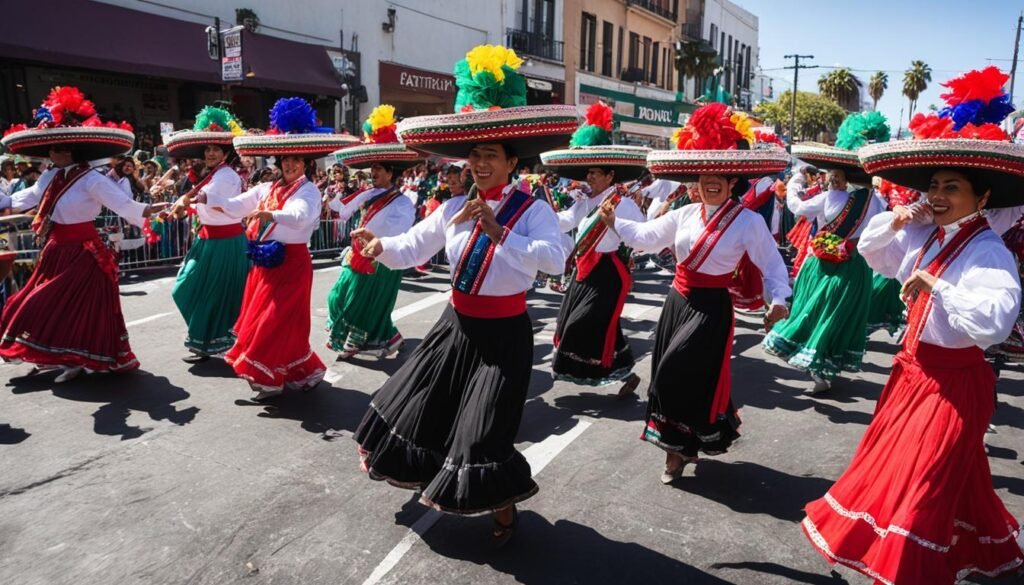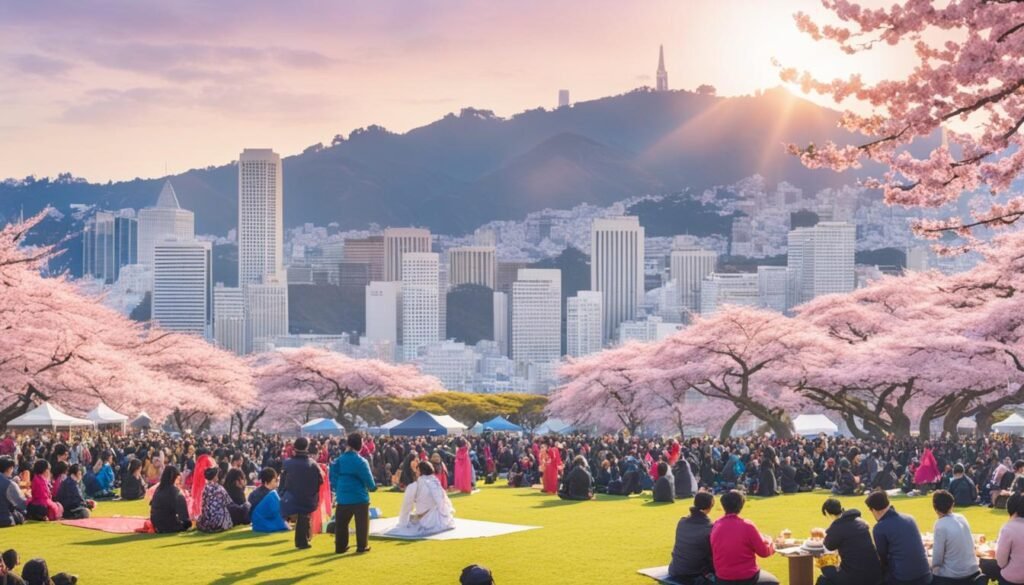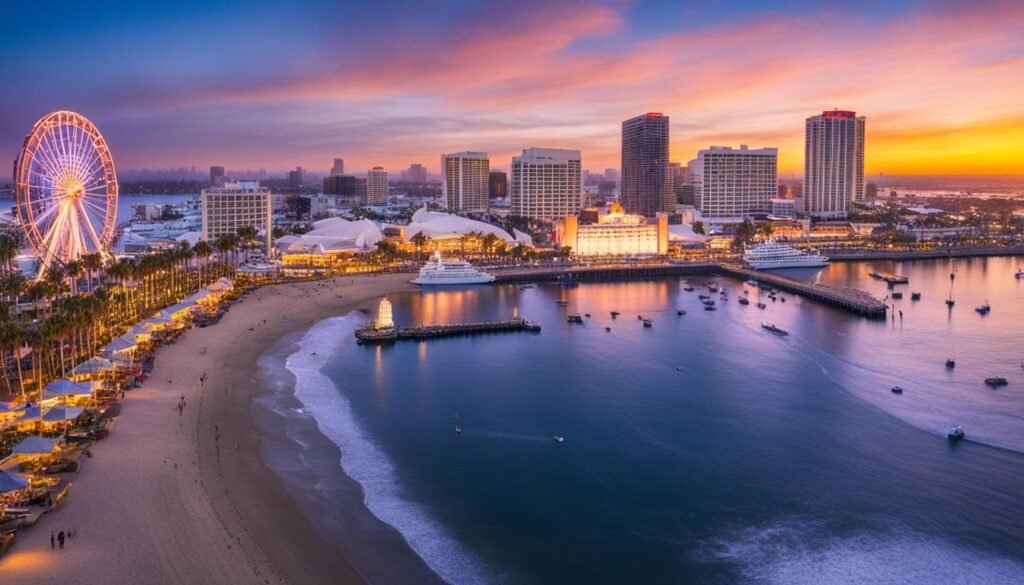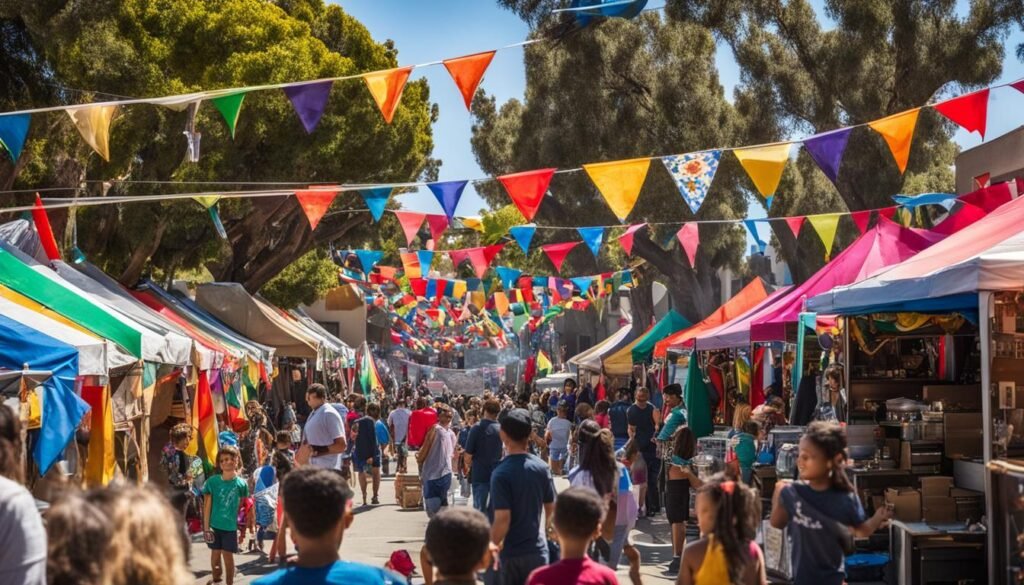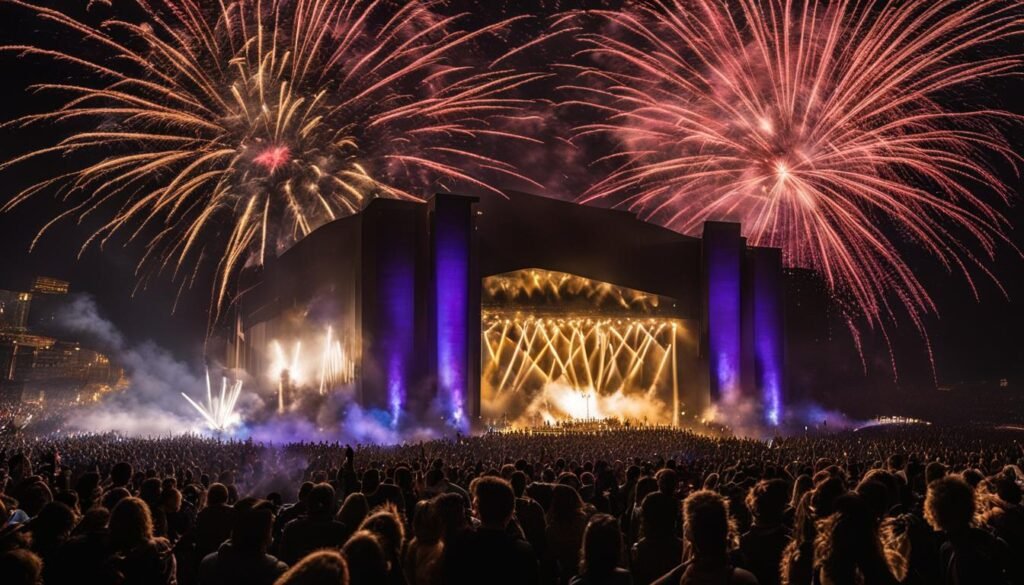Hello there! I’m excited to share with you all the vibrant festivities of Fiestas Patrias and how they are celebrated in the United States. Fiestas Patrias are traditional celebrations of Mexican national pride, independence, and culture that take place not only in Mexico but also right here in the heart of Los Angeles and other cities across the country.
One of the most famous celebrations is El Diez y Seis de Septiembre, also known as “El Grito de Dolores.” This significant holiday commemorates the start of the rebellion against Spanish rule and serves as a powerful symbol of Mexican independence. During Fiestas Patrias, you can witness a burst of national pride and unity among Mexican Americans and citizens of Mexico living in the U.S.
Key Takeaways:
- Fiestas Patrias are traditional celebrations of Mexican pride, independence, and culture.
- The famous El Diez y Seis de Septiembre celebration, also known as “El Grito de Dolores,” commemorates the start of the rebellion against Spanish rule.
- Fiestas Patrias aim to foster national pride and unity among Mexican Americans and citizens of Mexico living in the U.S.
- These celebrations take place in various cities, including Los Angeles, and showcase the rich traditions and customs of Mexican culture.
- Participating in Fiestas Patrias allows individuals to actively engage with their cultural roots and contribute to the preservation of traditions for future generations.
The Origins of Fiestas Patrias
Fiestas Patrias have a rich history that dates back to the events leading up to Mexico’s independence from Spain in 1821. The main celebration, known as El Diez y Seis de Septiembre, originated from the cry for independence made by Father Miguel Hidalgo y Costilla in Dolores, Guanajuato. On that historic day, Father Hidalgo gathered his followers and passionately shouted, “Mexicanos, viva México!”, symbolizing the courage and sacrifice of those fighting for independence.
Ever since, Fiestas Patrias have played a crucial role in preserving and passing on the history and culture of Mexico, especially among Mexican Americans. These celebrations have served as a way to educate and empower individuals, fostering a sense of pride and camaraderie within the community. By commemorating the cry for independence, Fiestas Patrias serve as a reminder of the sacrifices made by the freedom fighters and the profound impact their actions had on shaping Mexico’s identity.

The Significance of Fiestas Patrias
Fiestas Patrias hold immense significance in strengthening the national identity and cultural pride of Mexicans and Mexican Americans. These joyous celebrations serve as vivid reminders of the arduous struggle for independence and the invaluable need to preserve our rich cultural heritage.
For marginalized groups, Fiestas Patrias create a sense of community and empowerment, forging connections and fostering a shared sense of belonging. These celebrations not only honor the heroes of Mexican independence but also celebrate the resilience and achievements of the Mexican community as a whole.
Fiestas Patrias are more than just mere festivities; they constitute recognized national holidays that serve as a testament to the deep-rooted cultural significance of Mexican independence. Celebrated with fervor, these annual events proudly showcase the vibrant traditions, customs, and values that define Latin American culture.
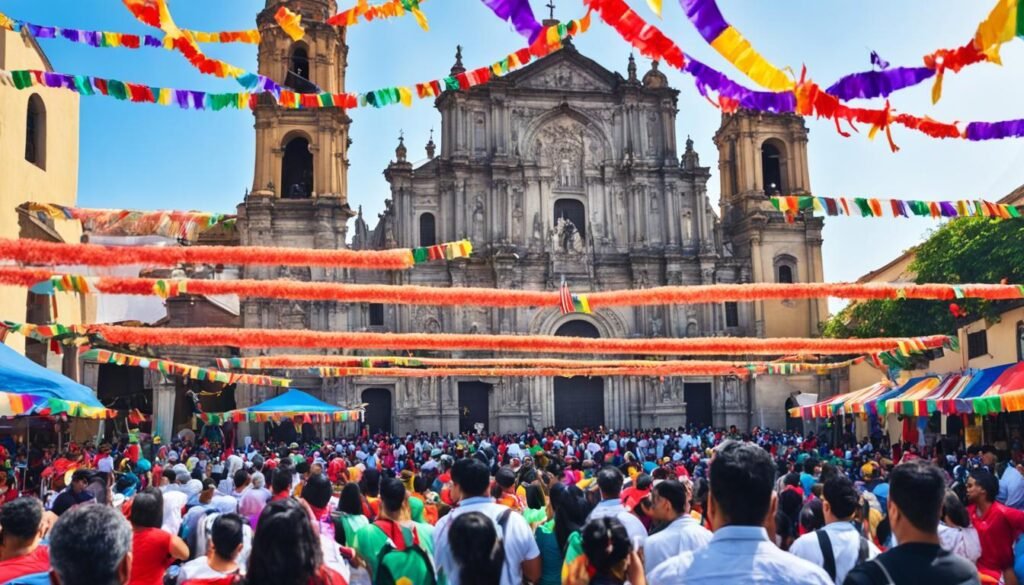
- Independence Day celebrations mark a vital chapter in Mexican history and signify the strength and resilience of a proud nation.
- These festivities honor the sacrifices made by our forefathers, reminding us of their unwavering commitment to freedom and liberty.
- By upholding these traditions and sharing them with future generations, we actively contribute to the preservation and promotion of our cultural heritage.
- Fiestas Patrias serve as a vibrant representation of Latin American culture, bridging the gap between past and present, and unifying diverse communities through joyful celebration.
- These cherished events provide a platform for Mexican and Mexican American communities to come together, forge common bonds, and express collective pride in their shared history and identity.
Celebrating Fiestas Patrias in Chile
In Chile, Fiestas Patrias are celebrated on September 18th and 19th, commemorating the First Cabinet Meeting in 1810 and the Glories of the Army, respectively. These dates hold immense significance in Chilean history and serve as a time to honor the country’s independence and national pride.
During Fiestas Patrias, Chileans come together to engage in a series of traditional activities that highlight the country’s rich culture. One of the most beloved traditions is the Chilean rodeo, a thrilling event that showcases the skills of local horsemen and their ability to handle cattle. It is a thrilling spectacle filled with excitement and fierce competition.
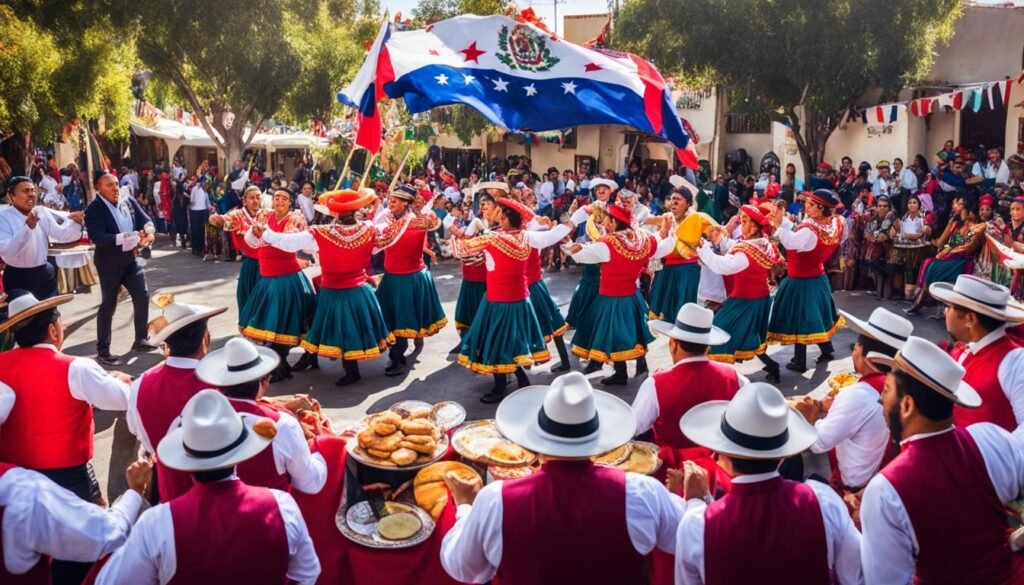
The cueca, Chile’s national dance, is another prominent feature of the celebrations. Couples dressed in traditional attire perform lively dance routines that symbolize courtship and flirtation. The energetic music and rhythmic movements create an atmosphere of joy and festivity.
As with any celebration, food plays a crucial role in Fiestas Patrias. Chileans indulge in typical dishes such as empanadas, made with a savory filling of meat, onions, and olives. These delicious pastries are a staple during the festivities and are enjoyed by both locals and visitors alike. Another popular treat is the anticucho, a skewer of marinated meat cooked on an open flame and served with a spicy pebre sauce.
To fully immerse themselves in the festivities, Chileans transform public spaces into vibrant party venues. Plazas, parks, and even the countryside are adorned with colorful decorations and filled with food vendors, dance floors, and live music. Families and friends gather to socialize, celebrate, and embrace the collective joy and unity that Fiestas Patrias brings.
These celebrations also mark the arrival of spring in Chile, adding an extra touch of vibrancy and renewal to the festivities. The warm weather and blossoming nature contribute to the overall festive atmosphere, making it a truly memorable time for everyone involved.
Fiestas Patrias in Chile are a time of joy, pride, and unity. It is an opportunity for Chileans to come together, celebrate their cultural heritage, and pay tribute to their country’s history. Through traditional activities, delicious cuisine, and a sense of community, Fiestas Patrias encapsulate the spirit of Chilean culture and provide an unforgettable experience for all.
Traditional Activities during Fiestas Patrias
Fiestas Patrias are a time of vibrant celebrations filled with traditional activities that showcase the rich cultural heritage and foster a sense of national pride. Whether in Mexico, the United States, or Chile, these festivities bring communities together to celebrate their shared history, identity, and the spirit of independence. Let’s explore some of the traditional activities that make Fiestas Patrias so special.
Parades
Parades are a common highlight of Fiestas Patrias in both Mexico and the United States. Colorful floats, marching bands, traditional costumes, and flag-waving participants fill the streets, creating a festive atmosphere. These parades serve as a visual representation of the unity and patriotism felt during these celebrations. They bring communities together and provide an opportunity for individuals to proudly display their cultural heritage.
Music and Dancing
No Fiestas Patrias would be complete without lively music and dancing. In Mexico and the United States, traditional folk music, mariachi bands, and regional dances take center stage. People gather in plazas, parks, and community centers to enjoy performances that celebrate their cultural roots. Whether it’s the energetic zapateado or the graceful jarabe tapatío, Fiestas Patrias offer a chance to immerse oneself in the vibrant traditions of Mexican music and dance.
Living History Activities
Living history activities provide an interactive and educational experience that allows participants to step back in time and learn about the historical events leading to Mexican independence. These activities often take the form of reenactments, where actors portray key figures such as Miguel Hidalgo y Costilla, Ignacio Allende, and José María Morelos. By engaging with these historical narratives, attendees gain a deeper appreciation for the struggles and sacrifices made by their ancestors.
Cueca Dance Competitions
In Chile, Fiestas Patrias are celebrated with lively cueca dance competitions. The cueca is the national dance of Chile, characterized by flirtatious movements and lively footwork. During the festivities, dancers compete in dazzling displays of traditional costumes and choreography. These competitions not only showcase the beauty and grace of the cueca but also reinforce Chilean national identity and cultural pride.
Outdoor Music Performances and Popular Games
Chileans also indulge in outdoor music performances and popular games during Fiestas Patrias. Bands perform traditional folk music, creating a lively ambiance that invites people to dance and celebrate. Popular games such as emboque (a ball and cup game) and rayuela (a traditional game involving throwing discs) add an element of fun and friendly competition to the festivities, bringing people of all ages together.
Preserving and Promoting Traditional Customs
Through these traditional activities, Fiestas Patrias provide a platform for preserving and promoting the customs and traditions that define Mexican and Chilean cultural heritage. By participating in parades, dancing, and living history activities, communities actively engage in the preservation of their rich history and pass it down to future generations. Fiestas Patrias symbolize the unity, resilience, and love for their country found within these communities.
In the next section, we will explore the culinary delights that are an essential part of Fiestas Patrias, from mouthwatering traditional dishes to refreshing beverages that add flavor to the celebrations.
Traditional Food and Drinks of Fiestas Patrias
Fiestas Patrias, the vibrant celebrations of Mexican independence day, are not complete without indulging in the mouthwatering traditional food and drinks. These culinary delights add to the festive atmosphere and showcase the rich flavors of Mexican cuisine.
In Mexico, popular dishes enjoyed during Fiestas Patrias include empanadas, which are filled pastries with various savory fillings such as beef, chicken, or cheese. Anticuchos, delicious meat skewers marinated in flavorful spices, are also a favorite choice. Another mouthwatering option is choripan, a sandwich made with grilled chorizo sausage and accompanied by different toppings and sauces.
Chileans also have their own delectable treats for Fiestas Patrias. Empanadas de pino, similar to the Mexican empanadas, are filled with a savory mixture of meat, onions, raisins, and olives. Like their Mexican counterparts, Chileans enjoy the scrumptious anticuchos and choripan as well. To complement these dishes, traditional sauces like pebre, a spicy salsa made with cilantro, garlic, onions, and chili, add an extra kick of flavor.
No celebration is complete without refreshing beverages, and Fiestas Patrias offer some traditional drinks that are sure to quench your thirst. In Mexico, chicha, a fermented beverage made from fermented corn, is a popular choice. For those looking for something sweet and alcoholic, terremoto, a drink made from pipeño (a fermented wine) mixed with grenadine syrup and pineapple ice cream, is a must-try during these festivities.
The traditional food and drinks consumed during Fiestas Patrias not only satisfy the taste buds but also represent the cultural heritage and culinary traditions of Mexico and Chile. By immersing yourself in these gastronomic delights, you can truly experience the essence of the celebrations.
Flag Display and Symbolism
One of the most important symbols during Fiestas Patrias is the display of the national flag. In both Mexico and Chile, it is mandatory to hang the flag from every building on September 18th and 19th. The flag represents the pride and unity of the nation, serving as a powerful visual reminder of the historical significance of the celebrations.
The flag holds great symbolism, representing independence and national identity. It is a powerful symbol of freedom and the sacrifices made by those who fought for independence. By displaying the flag, individuals pay homage to their country and demonstrate their patriotism. It is a tangible representation of the values and ideals that the national holiday, Independence Day, stands for.
Violating the flag display rules can result in fines, emphasizing the importance and respect given to the flag during Fiestas Patrias. The mandatory display of the flag showcases the unity of the nation and serves as a unifying force that connects Mexicans and Chileans around the world.
To fully appreciate this symbolic gesture, it is essential to understand the historical context and significance behind the flag. The colors of the flag hold deep meaning: green represents independence, white symbolizes pureness and purity, and red signifies the bloodshed of those who fought for freedom.
The flag is not only a visual symbol but also an emotional and cultural emblem. It evokes a sense of pride, nostalgia, and identity for those celebrating Fiestas Patrias, creating a shared experience that fosters a sense of belonging and unity.
As the celebrations unfold during Fiestas Patrias, the vibrant display of the national flag serves as a powerful reminder of the past struggles and a symbol of hope for a better future. It unites Mexicans and Chileans, both at home and abroad, in their shared history, heritage, and national pride.
Conclusion
Fiestas Patrias are cultural events that bring communities together to celebrate annual festivities and honor historical commemorations. These vibrant celebrations serve as a powerful reminder of the struggle for independence and the rich cultural heritage of Mexico and Latin America.
From colorful parades and energetic traditional dances to mouth-watering traditional food and refreshing drinks, Fiestas Patrias embody the spirit of unity and heritage. These events provide a platform for individuals to actively engage with their cultural roots, fostering a sense of pride and connection to their heritage.
By participating in Fiestas Patrias, individuals contribute to the preservation and promotion of their cultural traditions for future generations. These festivities foster a strong sense of community and provide an opportunity for people to come together and celebrate their shared history and identity.
FAQ
What are Fiestas Patrias?
Fiestas Patrias are traditional celebrations of Mexican national pride, independence, and culture that take place in Mexico and across the United States. They aim to bolster national pride and unity among citizens of Mexico and Mexican Americans in the U.S.
When did Fiestas Patrias originate?
Fiestas Patrias originated from the events leading up to Mexico’s independence from Spain in 1821. The main celebration on September 16, known as El Diez y Seis de Septiembre, commemorates the cry for independence made by Father Miguel Hidalgo y Costilla in Dolores, Guanajuato.
What is the significance of Fiestas Patrias?
Fiestas Patrias play a significant role in bolstering national identity and cultural pride among Mexicans and Mexican Americans. They serve as a reminder of the struggle for independence and the importance of preserving cultural heritage. Moreover, they provide a sense of community and empowerment for marginalized groups.
How is Fiestas Patrias celebrated in Chile?
In Chile, Fiestas Patrias are celebrated on September 18th and 19th, commemorating the First Cabinet Meeting in 1810 and the Glories of the Army, respectively. The celebrations in Chile include traditional activities such as Chilean rodeo, dancing the cueca (the national dance), and enjoying typical Chilean cuisine.
What are the traditional activities during Fiestas Patrias?
Fiestas Patrias are marked by a variety of traditional activities. In Mexico and the United States, parades, music, dancing, and living history activities are common. In Chile, cueca dance competitions, outdoor music performances, and popular games are enjoyed. These celebrations showcase the richness of cultural heritage and provide a platform for preserving and promoting traditional customs.
What are some traditional food and drinks of Fiestas Patrias?
Fiestas Patrias are synonymous with delicious traditional food and drinks. In Mexico, popular dishes include empanadas, anticuchos, and choripan. Chileans enjoy empanadas de pino, anticuchos, and choripan as well, along with traditional sauces like pebre. Traditional drinks like chicha and terremoto are also enjoyed during the festivities.
What is the significance of flag display during Fiestas Patrias?
Displaying the national flag is an important symbol during Fiestas Patrias. In both Mexico and Chile, it is mandatory to hang the flag from every building on September 18th and 19th. The flag represents the pride and unity of the nation and serves as a visual reminder of the historical significance of the celebrations.
What is the importance of Fiestas Patrias as cultural events?
Fiestas Patrias are more than just celebrations; they are cultural events that bring communities together to commemorate historical milestones and express national pride. They serve as a reminder of the struggle for independence and the rich cultural heritage of Mexico and Latin America. By participating in these celebrations, individuals can actively engage with their cultural roots and contribute to the preservation of their traditions for future generations.

